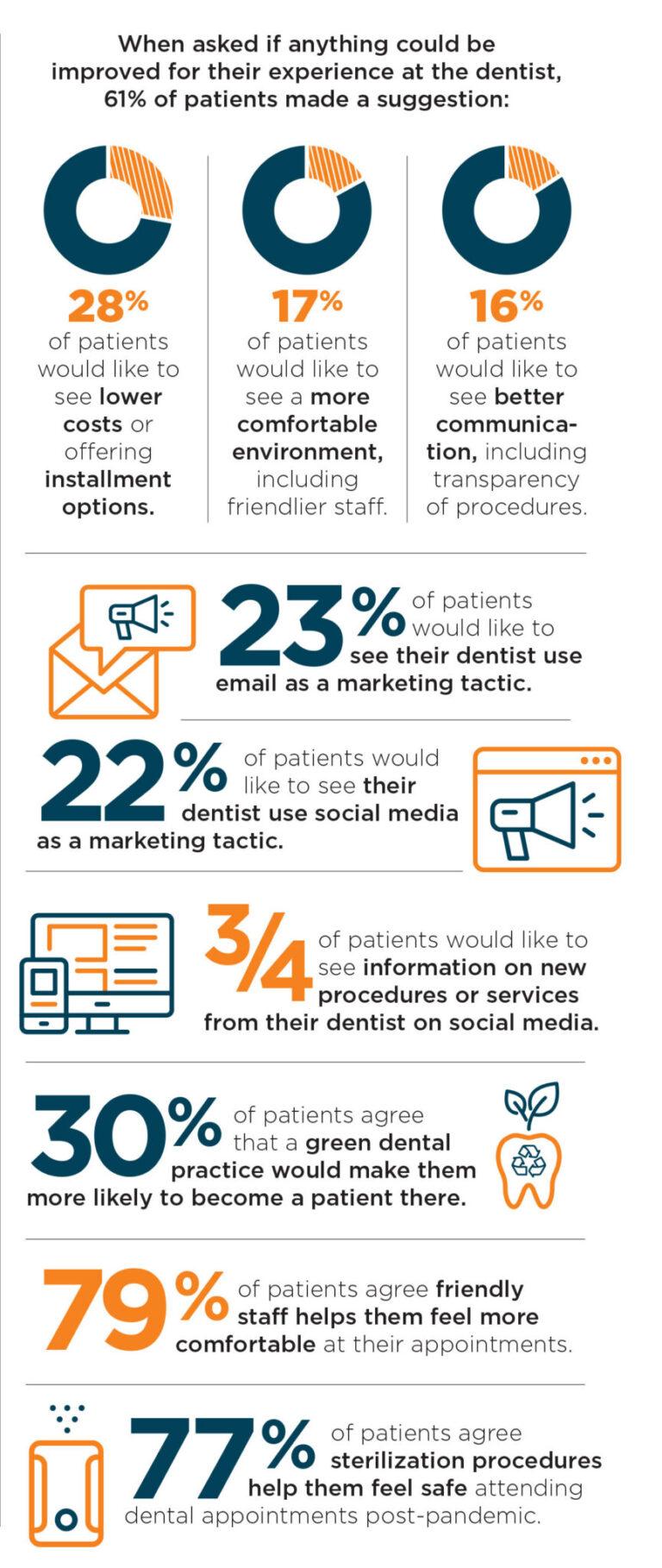
We asked Canadian dental patients if they would like to see anything improved for their experience at the dentist and while 35% said “everything was fine,” 61% made a suggestion. Patients aged >30 to 49 years of age were more likely to leave a suggestion for improvement while patients aged 50 and up were more likely to be content with their current dental experience.
Lowering costs and offering payment installments ranked as the top suggestion. If you do not offer payment options, you may want to consider offering this service or enrolling in the Canadian Dental Care Plan, which helps families with a yearly household income under $90,000.
The second most common suggestion was related to having a more comfortable environment at the dentist, which included friendlier staff and overall better customer service along with the physical comfortability of the waiting room and design of the office. If you have not taken the time to invest in the comfort of your practice, consider checking out Oral Health’s “Office space” series for inspiration.
Better overall communication is ranked as the third most common suggestion for improvement. This is a reminder to ensure you and your staff are properly communicating about procedures and treatments, and being transparent regarding costs and insurance. Patients will respect your authenticity and feel safer at their appointments.

As seen in the print issue of Oral Health March 2025
In 2024 Bramm Research, a third-party independent research house, conducted a confidential online survey of general population Canadians who have visited a dentist within the past two years. The survey was limited to those 25 years or older, and nine age brackets were filled proportionally to the Canadian general population. Provincial proportions were also filled to proportionally represent English speakers in Canada of age 25 or higher. The target sample for gender was 50% female and 50% male. The survey launched on Friday, September 20th and closed on Thursday, October 3rd for a total of 14 days in field, and the number of completed responses was 1,000, the same as in 2019. With a total sample of 1,000, the margin of error is plus or minus 3.1 percentage points at the 95 percent confidence level. If, for example, 50% of the sample indicated that agreed with a statement, then we can be reasonably sure (19 times out of 20) of an accuracy within +/- 3.1%. This means that a total census would reveal an answer of not less than 46.9% and not more than 53.1%.
Sponsored by

.











